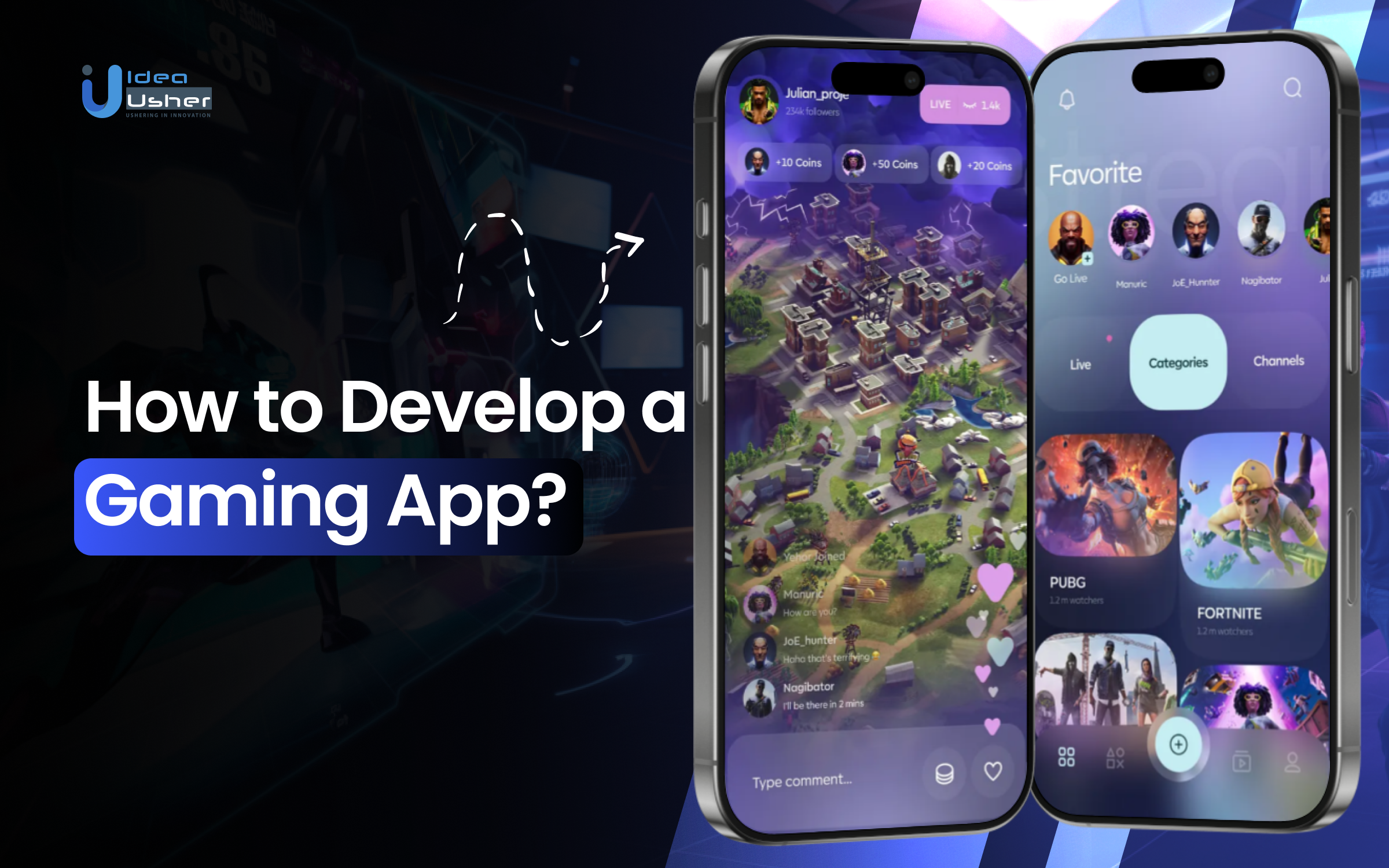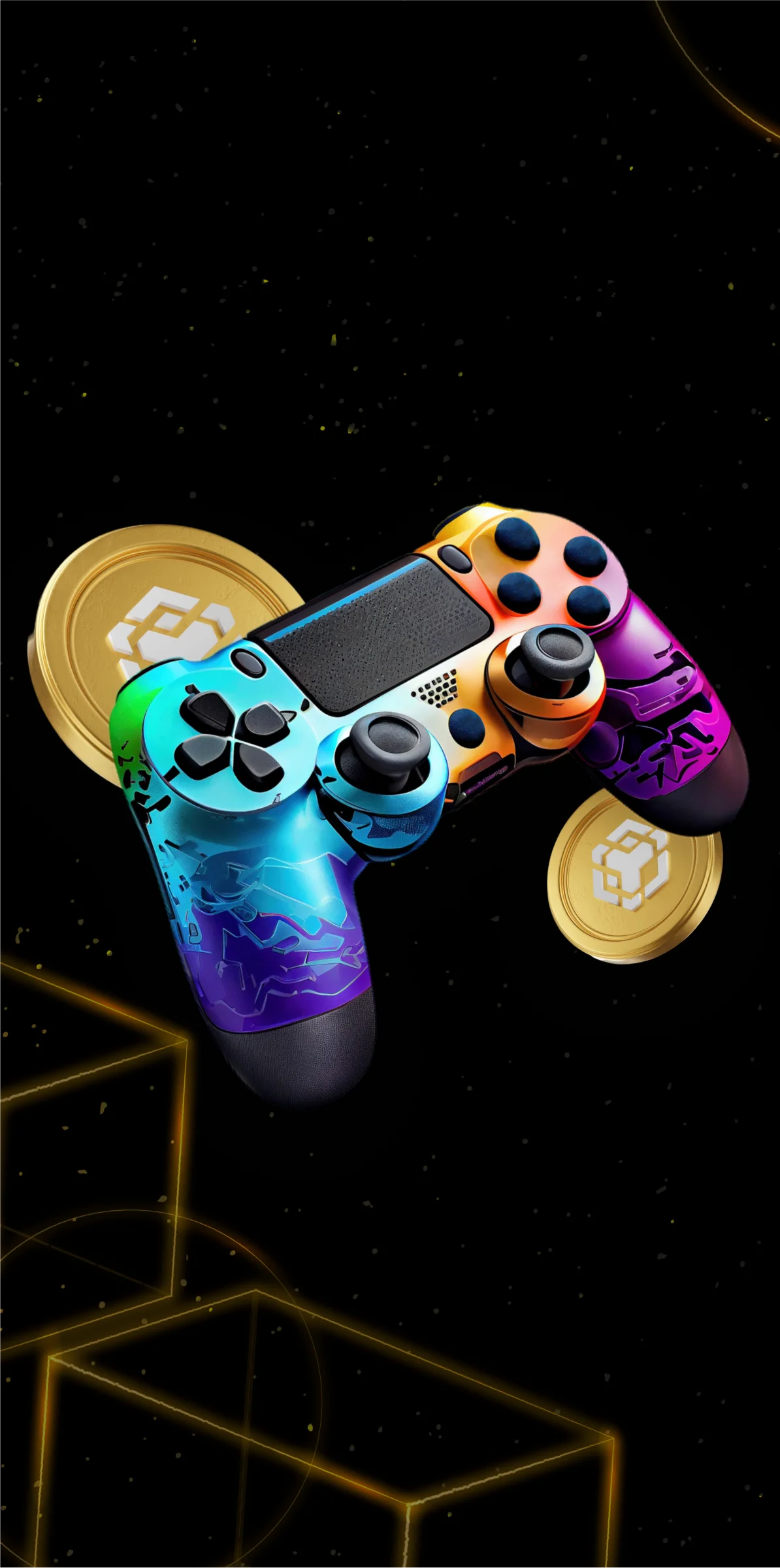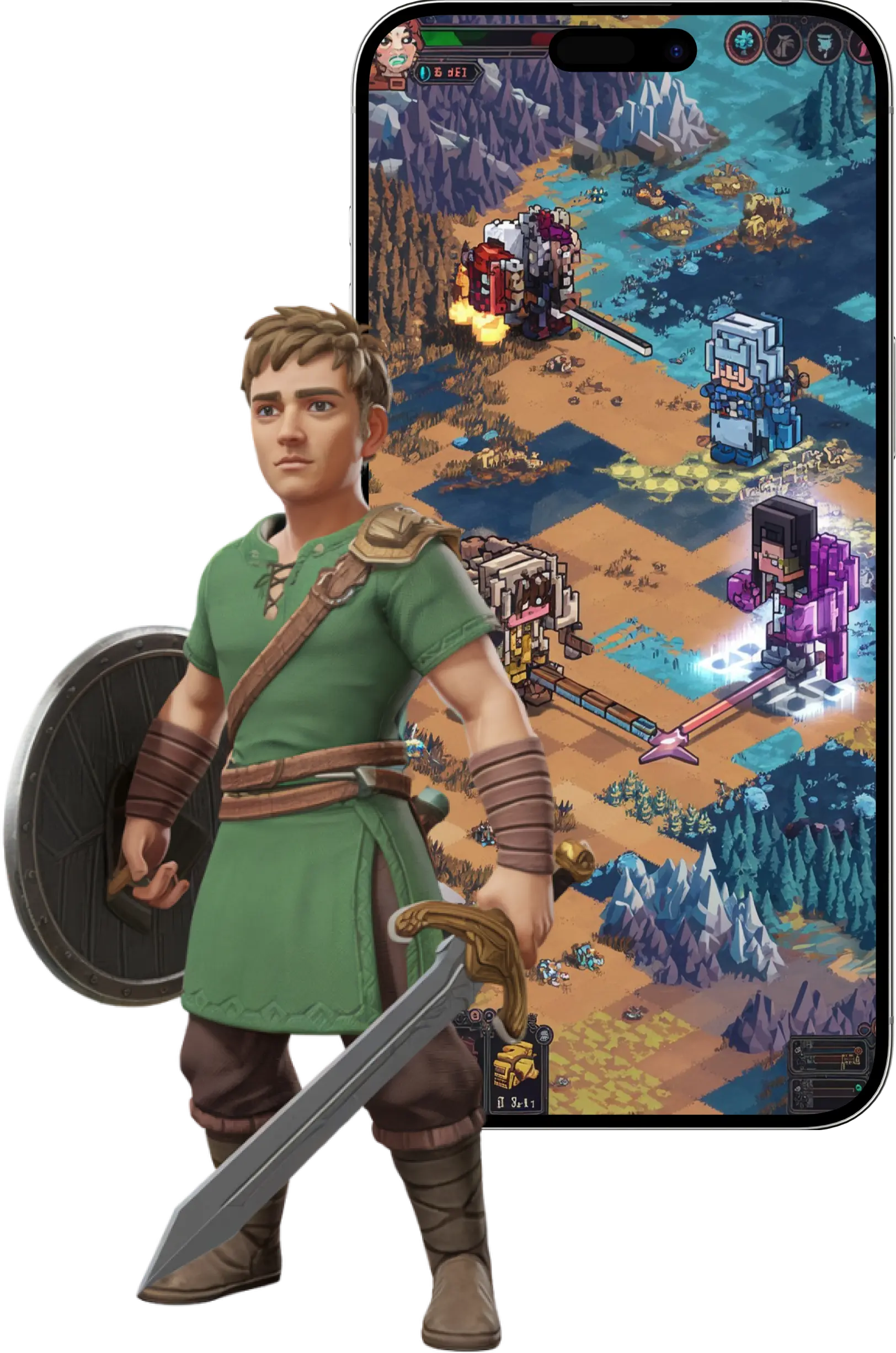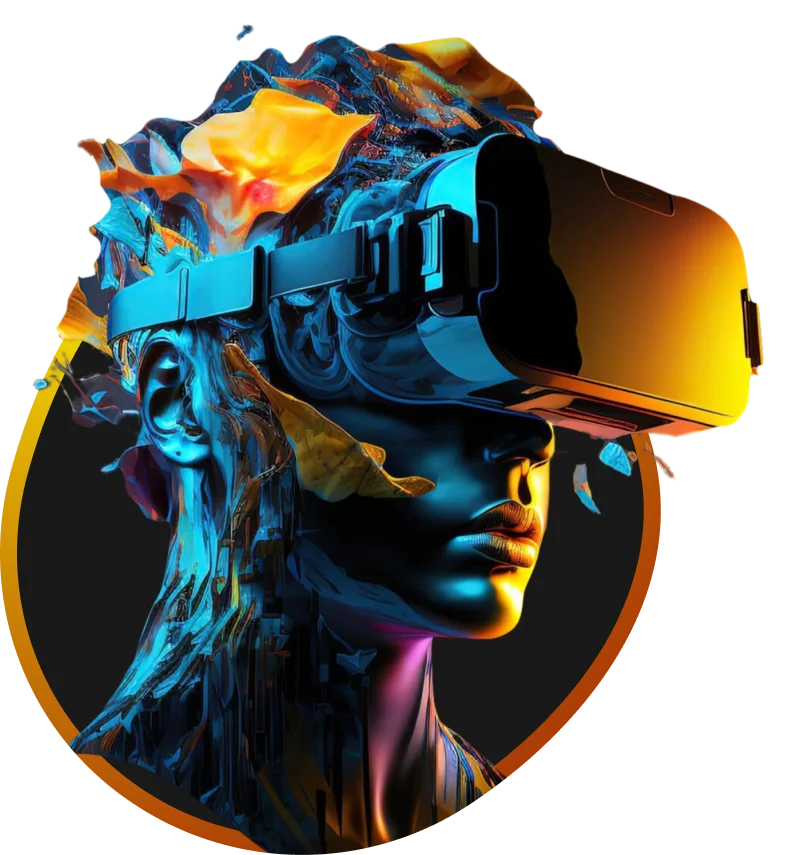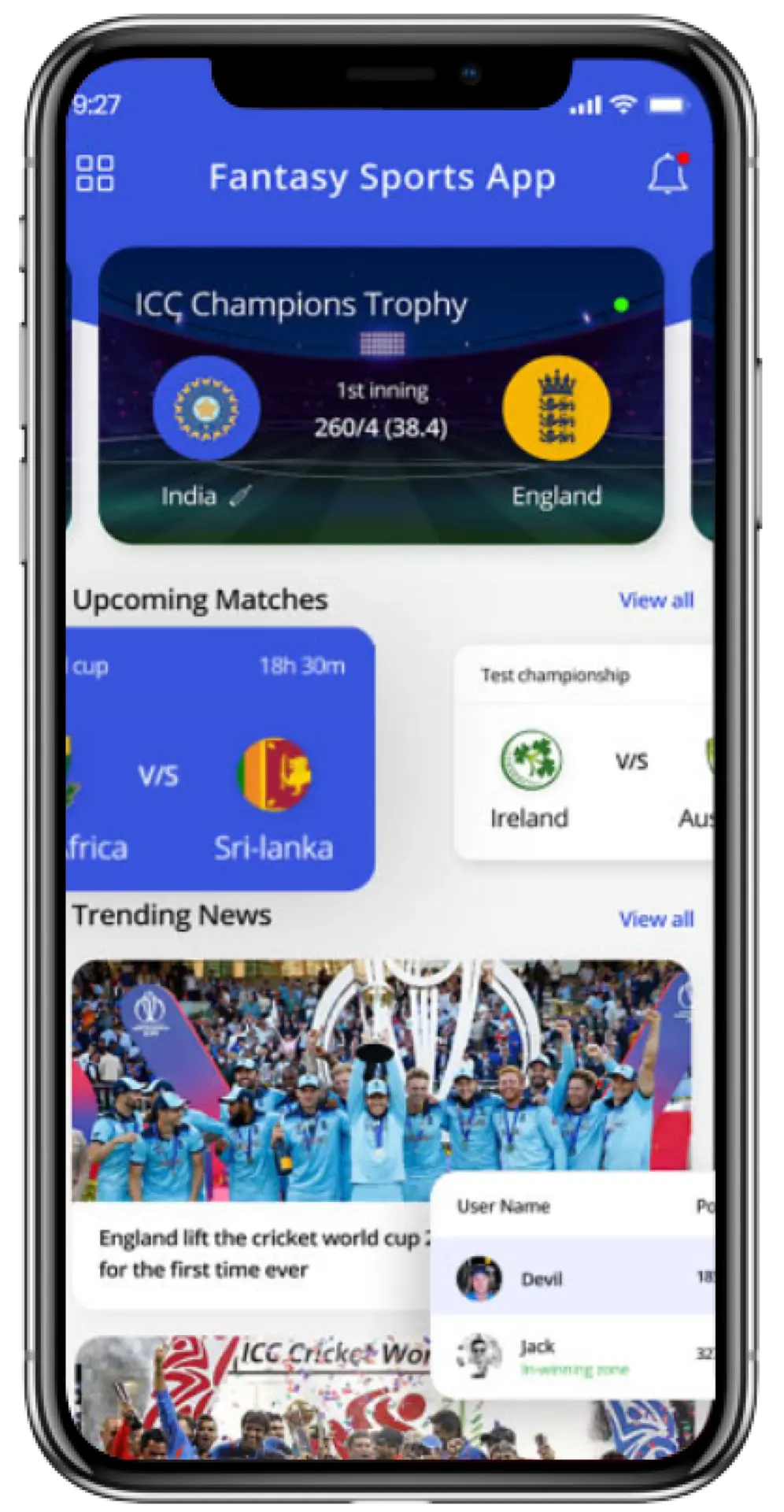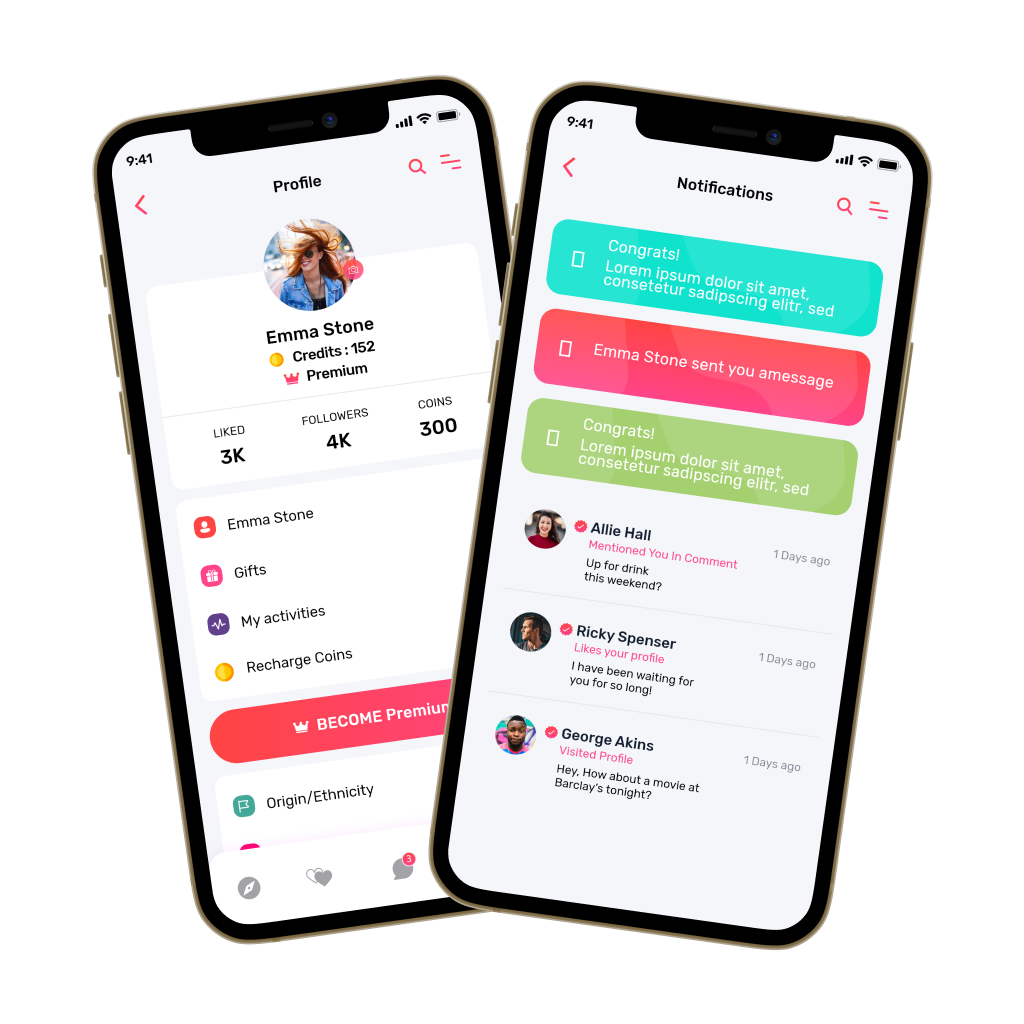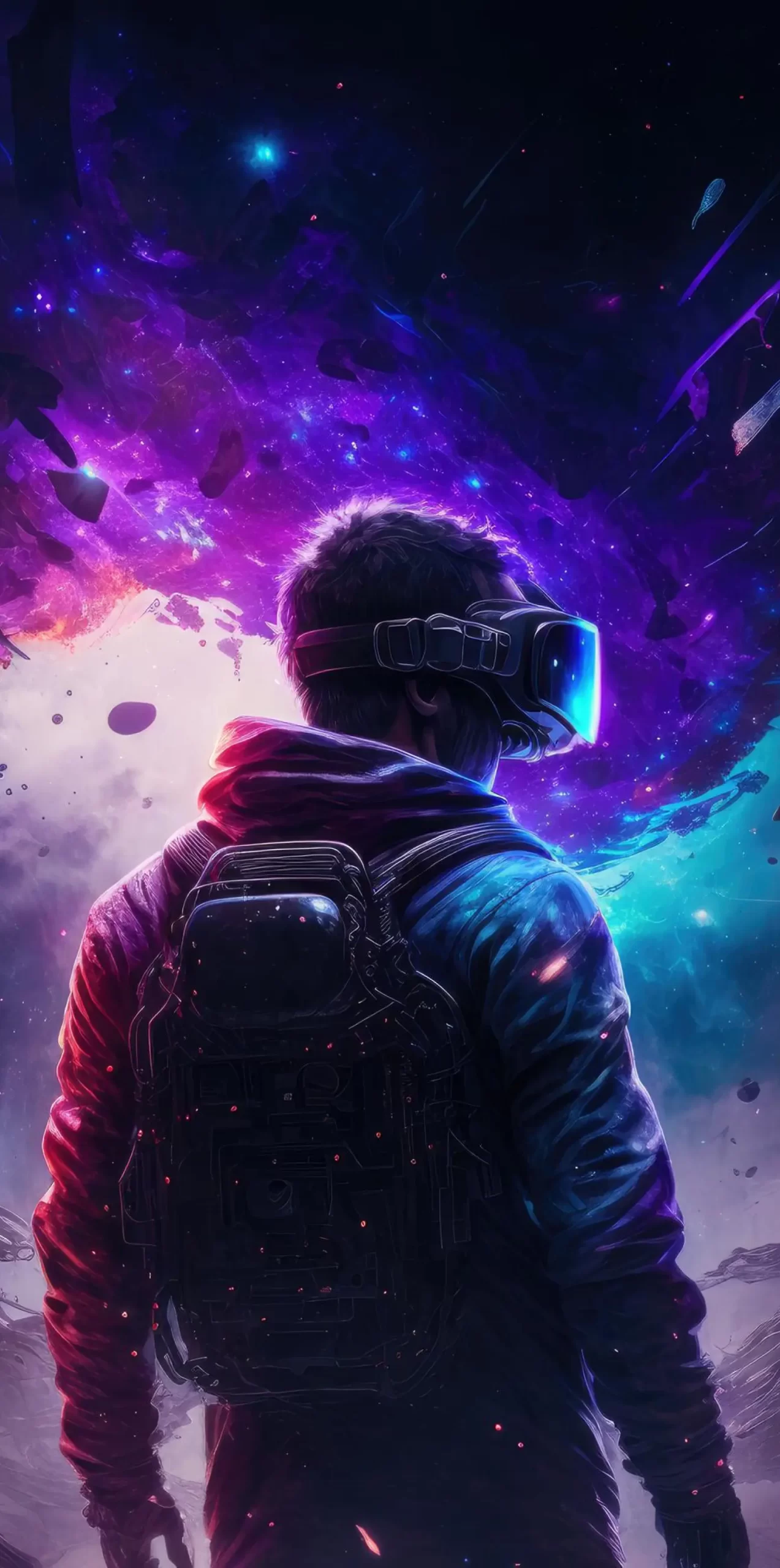The gaming industry is on fire right now, and mobile gaming is leading the charge. By 2025, gaming apps aren’t just a way to kill time, they’ve evolved into highly engaging platforms that keep players coming back for more. With billions of users around the globe, mobile gaming revenue is soaring, and businesses are noticing.
They’re jumping on the opportunity to tap into this booming market, finding creative ways to drive user engagement and open up new revenue streams. It’s an exciting time for both gamers and companies alike.
Over the years, we’ve developed a number of gaming apps that not only entertain but also incorporate key elements like real-time multiplayer modes, skill-based rewards, and immersive narratives. IdeaUsher understands the importance of combining these elements to create both highly engaging and monetizable gaming experiences. We’re here to spread our knowledge through this blog, offering a roadmap to developing successful gaming apps that can compete in today’s market.
Key Market Takeaways for Gaming Apps
According to StraitsResearch, the global gaming app market is experiencing impressive growth, with its value set to rise from USD 106.95 billion in 2025 to USD 211.55 billion by 2033, reflecting a strong CAGR of 8.9%. This surge is driven by the widespread use of smartphones and significant advancements in gaming technologies like augmented reality, virtual reality, and cloud gaming, making immersive and interactive gaming experiences more accessible to a diverse, global audience.
Source: StraitsResearch
In the U.S., certain genres of gaming apps have captured the largest share of the market. Action games, such as Call of Duty: Mobile, continue to dominate with their fast-paced, multiplayer experiences. RPGs like Genshin Impact have gained a massive following, offering expansive open worlds and deep character development.
Casual games, with Candy Crush Saga leading the charge, attract a wide range of players thanks to their easy-to-understand yet addictive gameplay.
Partnerships within the gaming industry have also played a significant role in fueling growth. For example, Epic Games, known for creating Fortnite, has teamed up with major brands like Marvel and Sony to bring exclusive in-game content to players. These collaborations not only enhance the gaming experience but also attract a broader audience, further driving the success and popularity of gaming apps.

Understanding Gaming Apps: Core Concepts
Gaming apps are interactive software designed to entertain, engage, and sometimes challenge users. They offer dynamic visuals, real-time interactivity, and reward systems to captivate users. Unlike traditional applications, gaming apps emphasize fun, competition, and personal growth.
Today, these apps are available across various platforms, such as mobile, web, PC, and console. Ranging from basic puzzles to intricate multiplayer experiences, gaming apps have become an integral part of digital culture.
Categories of Gaming Apps
Gaming apps come in a variety of forms, each catering to different types of gameplay, difficulty, and user preferences:
| Game Type | Examples | Key Traits |
| Casual Games | Candy Crush, Angry Birds | Quick, addictive, simple gameplay |
| Mid-Core Games | Clash Royale, Among Us | Balanced difficulty, moderate playtime |
| Hyper-Casual Games | Stack Jump, Hole.io | Instant play, ad-based monetization |
| RPG | Genshin Impact, Diablo Immortal | Rich narrative, IAP for progression |
| Simulation Games | The Sims, SimCity | Realistic, training/learning use |
| Strategy Games | Clash of Clans, Civilization | Long-term engagement, decision-making |
Standalone vs. Integrated Gaming Modules
Enterprises have two options when it comes to incorporating gaming elements into their offerings:
- Standalone Gaming Apps: These are dedicated apps entirely focused on gaming, like Pokémon GO, which offers a complete and independent gaming experience.
- Integrated Gaming Modules: Mini-games embedded within existing platforms, such as gamified quizzes in LinkedIn Learning or challenges within the Starbucks Rewards app.
Integrated gaming is becoming increasingly popular as it allows businesses to engage users within existing ecosystems, improving retention and conversion without needing separate apps.
Why Enterprises Should Invest in Gaming Apps?
Investing in gaming apps helps businesses boost user engagement with fun, interactive experiences that keep people coming back. They open up new revenue streams through ads, in-app purchases, and subscriptions. Plus, they can create strong brand loyalty by turning customers into active, involved communities.
1. Higher User Retention & Engagement
Gaming apps are excellent at keeping users engaged over time through reward systems, progression mechanics, and social features like multiplayer modes or leaderboards. Studies show gamified apps can achieve 30-50% higher retention rates than non-gamified apps.
2. New Monetization Streams
Gaming apps offer diverse ways to make money, from in-app purchases like skins and power-ups to ads that players watch for rewards. Subscriptions unlock premium content, and sponsorships bring in revenue through branded product placements. These strategies help games generate consistent, profitable income streams.
3. Brand Differentiation Through Immersive Experiences
Companies like Nike, McDonald’s, and Coca-Cola have leveraged gaming apps to enhance their brand experiences:
- Nike Run Club uses gamified fitness challenges to reinforce its brand.
- McDonald’s Monopoly Game has driven customer loyalty.
- Coca-Cola has used AR-powered games to boost engagement.
4. Building Communities Around Entertainment
Gaming apps can turn players into brand advocates by fostering communities. Examples include:
- Reddit’s upvote/downvote system and how it gamifies content curation.
- Discord and its deep ties to gaming communities.
- Fortnite’s virtual concerts by artists like Travis Scott and Ariana Grande, showing how games can transcend into social and cultural events.
How Gaming Apps Actually Work?
Gaming apps run on a continuous cycle called the game loop, where user inputs, game updates, rendering, and audio play out in real-time. The engine handles things like physics, collisions, and graphics to keep everything smooth and immersive. Choosing the right engine (like Unity or Unreal) depends on the type of game and performance needs.
1. Game Engine Architecture & Loop
At the heart of every gaming app is a fundamental cycle called the game loop, which is responsible for the continuous execution of essential tasks during gameplay. This loop runs at a high frame rate (usually 60 FPS or higher) for smooth, uninterrupted experiences. Here’s how the cycle works:
- Input Processing: Captures user inputs (touch, keyboard, controller) to determine player actions.
- Game State Update: Updates game mechanics such as physics, AI, and gameplay logic based on player input and game conditions.
- Rendering: The graphics pipeline displays images and applies shaders and effects to render the game world.
- Audio Playback: Synchronizes and plays sound effects and background music to enhance the game’s atmosphere.
If any part of this loop slows down or drops frames, the player will notice issues like lag or delayed inputs, which can break the immersion.
2. Unity vs Unreal vs Custom Engines
| Feature | Unity (C#) | Unreal (C++) | Custom Engine |
| Best For | Mobile, 2D/3D indie games | AAA graphics, high-end 3D | Full control, specialized needs |
| Performance | Moderate (needs optimization) | High (built-in optimizations) | Depends on developer skill |
| Asset Store | Massive library | High-quality marketplace | None (must build everything) |
| Learning Curve | Easier | Steeper | Very difficult |
Key Insight: Unity is favored for its flexibility and ease of use in enterprise-level projects, especially for mobile and 2D games. Unreal is best for visually-intensive AAA titles. Custom engines are rare and typically only used by large studios (e.g., EA’s Frostbite, Rockstar’s RAGE).
3. Asset Pipeline & Management
Efficient handling of assets is crucial for modern games. Here’s how they are typically managed:
- 3D Models: Formats like FBX or OBJ.
- Textures: PNG or JPEG, often compressed using techniques like ASTC or ETC2.
- Animations: Bone-based or morph target animations.
- UI Elements: Vector-based for resolution independence.
- Audio: WAV for quality, MP3 for smaller file sizes.
Efficient Loading & Streaming:
- Texture Atlases: Combine multiple textures into a single file to reduce the number of calls to the GPU.
- Level Streaming: Loads portions of the game environment dynamically to avoid performance hiccups.
- Asset Bundles: Downloads assets as needed, avoiding storage bloat.
- Audio Compression: Formats like ADPCM reduce file sizes for mobile games.
4. Collision Detection & Resolution
Collision detection keeps gameplay smooth, especially in fast-paced or 3D games. AABB is quick but not super precise, good for large environments like Minecraft. For 2D or open-world games, using bounding circles or spatial techniques like Quadtrees/Octrees makes checks faster and more efficient.
Physics Resolution:
- Impulse-based: Realistic bounces, typically used in games like Angry Birds.
- Trigger-based: No physics, just events (e.g., collecting items).
- Raycasting: Detects objects along a line, commonly used for shooting or laser-based mechanics.
Performance Tip: Simplified collision meshes (e.g., using boxes instead of complex models) help keep performance high.
5. Shader Programming & Rendering Techniques
Vertex shaders tweak things like position and color to make objects move or change in the game. Fragment shaders work at the pixel level to add details like lighting, shadows, or textures. Together, they make the visuals look dynamic and realistic.
Deferred vs Forward Rendering:
| Technique | Pros | Cons |
| Forward | Simpler, mobile-friendly | Struggles with numerous lights |
| Deferred | Handles many lights simultaneously | Higher GPU memory usage |
Lighting & Effects:
- Dynamic Shadows: Real-time shadows vs. baked lighting for performance.
- Particle Systems: Effects like explosions or smoke.
- Post-Processing: Includes effects such as motion blur, HDR, or depth of field.
Mobile Optimization: Use light probes instead of real-time shadows to save performance on mobile devices.
6. Networking & Latency Management (Online Games)
In multiplayer games, syncing players is key to reducing lag. Client-side prediction lets the game move players instantly while waiting for server confirmation. The server then fixes any mismatches, and interpolation helps smooth out other players’ movements.
UDP vs TCP for Gaming:
| Protocol | Use Case | Why? |
| UDP | Fast-paced games (shooters, racing) | Faster and less reliable, no resending |
| TCP | Turn-based games (e.g., chess) | Reliable but slower |
Lag Fixes: Techniques like rollback netcode in fighting games (e.g., Street Fighter 6) hide latency by predicting player actions.
7. Memory Management & Garbage Collection
Efficient memory management is key to smooth gameplay:
- Object Pooling: Reuses objects like bullets or enemies to reduce the performance overhead of creating and destroying objects repeatedly.
- Garbage Collection (GC): Automatically frees memory, but can cause frame drops if not handled carefully.
Best Practice for Mobile: Avoid too much garbage collection to prevent stuttering, and pre-allocate memory at the start of the game.

Benefits of Developing a Gaming App
Developing a gaming app offers massive potential for rapid user growth and engagement, with players coming back more often than traditional app users. It also provides multiple ways to monetize, like in-app purchases and ads. Plus, gaming apps can set your brand apart, offering innovative experiences that keep users loyal and invested.
1. Technical Advantages
Scalable Architecture
Modern games use cloud-based services like AWS GameLift and Google Cloud to handle millions of players without lag. These platforms ensure smooth, scalable gameplay, even as player numbers grow rapidly, with edge computing reducing latency in competitive games.
Advanced Cross-Platform Support
Companies can use a single codebase to deploy games across multiple platforms, including mobile, web, and consoles. This reduces development time and costs by 60%, while adaptive UI/UX ensures the game works well on any device, including new tech like XR headsets.
Built-In Support for Critical Systems
Game engines like Unity come with integrated systems for analytics, monetization, and device optimization. They track player behavior, offer in-app purchases, and manage battery life and memory to keep the game running smoothly across devices.
2. Business Benefits
Rapid User Growth & Engagement
Gaming apps see higher user retention and more frequent sessions compared to traditional apps. Features like social sharing, live events, and guild systems keep players engaged, with top games seeing 40-60% retention after 7 days.
Multiple Monetization Avenues
Gaming apps have diverse revenue options, including in-app purchases, ads, and subscriptions. Popular games like Candy Crush make billions from IAPs, while ads like rewarded videos have high conversion rates, ensuring steady income.
Enhanced Brand Loyalty
Gamification boosts loyalty and engagement. Apps like Starbucks and Nike Run Club use rewards and achievement systems to drive user behavior, with apps like Duolingo seeing high retention rates through gamified features.
3. Competitive Advantages
Market Differentiation
Gamified experiences help businesses stand out. Retail apps with AR shopping games have higher conversion rates, while gamified training programs, like those by Salesforce, improve user completion rates, giving companies a competitive edge.
Future-Proof Investment
Gaming tech prepares businesses for the future with metaverse integration, AI-driven NPCs, and blockchain for digital ownership. These technologies are already being used in gaming and will continue to offer new engagement opportunities as trends evolve.
How to Develop a Gaming App?
When we develop a gaming app for our clients, we follow a clear and effective process to make sure the game is fun, scalable, and optimized for success. We work closely with our clients at every step to ensure the game reflects their vision and stands out in the competitive market.
1. Market Research & Game Type
We begin by researching market trends and understanding competitors to find unique niches for the game. By identifying themes that resonate with audiences, like mental health or cultural stories, we position the game to stand out.
2. Game Design Document
We create a Game Design Document that outlines the core gameplay loop, monetization strategy, art style, and progression systems. This document acts as a roadmap, keeping the entire team aligned and focused on the same vision.
3. Prototype & Validate Mechanics
We then build a simple, playable prototype to test the core mechanics. This goes through internal testing and external feedback to ensure the gameplay feels right, and we make adjustments before moving forward.
4. Full Game Development
With the prototype validated, we start building the full game using engines like Unity or Unreal. We develop the front-end (UI, animations) and back-end (multiplayer logic, leaderboards) while integrating sound design and collaborating across teams using version control.
5. Monetization & Engagement
Once the core gameplay is in place, we integrate monetization options like in-app purchases (IAPs) or rewarded ads. We also design reward systems like badges and streaks that engage players and keep them coming back, while ensuring monetization doesn’t disrupt the experience.
6. Launch & Scale m
After development, we launch the game with a soft release to gather feedback. Once optimized, we move to the global launch. Afterward, we monitor metrics like retention and revenue, scaling the game with live content updates and optimizing servers to handle increased traffic.
Top Challenges in Gaming App Development
After working on numerous gaming apps for clients, we’ve seen the common challenges that pop up during development. Here’s how we handle them based on our experience, ensuring that every game launch is smooth and successful.
Challenge 1: Balancing Fun with Monetization
Players don’t respond well to aggressive monetization tactics, like paywalls or constant ads. When in-app purchases disrupt game balance and lead to “pay-to-win” mechanics, it causes major pushback. This can alienate the player base, especially if the game feels more focused on making money than on providing an enjoyable experience.
How We Tackle It:
We focus on seamless integration—making sure monetization fits naturally into the game. Reward ads offer bonuses for watching, cosmetic purchases don’t impact gameplay, and battle passes reward players for staying active.
For instance, FIFA Ultimate Team monetizes collectibles without messing with the core experience. Genshin Impact is another great example—free gameplay with optional paid character upgrades that feel fair.
Challenge 2: Device Fragmentation & Performance
With thousands of Android devices and varying iOS performance, it’s tough to make sure the game works well for everyone. Some users are still on older devices, which can cause performance issues. This can lead to negative reviews and a loss of players if the game doesn’t run smoothly on all devices.
How We Tackle It:
We focus on optimization strategies like adaptive LOD systems, texture compression, and shader simplifications to ensure smooth performance. Testing across a wide range of devices is key, using cloud-based device farms and performance profiling tools helps us catch issues early.
PUBG Mobile is a perfect example, running even on older devices like the iPhone 6S with dynamic resolution scaling.
Challenge 3: Server Scaling for Multiplayer
Big events or launches can cause player numbers to skyrocket, and geographic latency can lead to uneven player experiences. If servers aren’t prepared to handle sudden spikes, players experience lag, crashes, or desync, which can severely affect the gameplay.
How We Tackle It:
We rely on cloud scaling through AWS GameLift or Google Agones to handle traffic spikes. We also use client-side prediction to mask input lag and regional edge servers to reduce ping. For turn-based games, we suggest serverless architectures to cut costs by up to 70%.
Challenge 4: Retention Drop-Off
We know that 75% of users churn within the first 3 days, and Day 30 retention can dip to just 4-8%. This drop-off is a major issue, especially when players lose interest quickly and don’t return to the game.
How We Tackle It:
To boost retention, we focus on content cadence, offering regular events and seasonal updates to keep the game fresh. Guild systems and asynchronous PvP competitions also keep players engaged. We’ve also seen great results with smart notifications, things like personalized rewards or reminders for abandoned carts.
Clash Royale does this well, keeping over 20% of players active even after 30 days through tournaments and clan wars.

Key Tools & APIs for Gaming App Development
Developing a gaming app involves selecting the right tools, APIs, and frameworks to ensure smooth gameplay, efficient performance, and a seamless user experience. Below are some of the most essential resources in the gaming industry today, categorized based on their use.
1. Game Engines: The Foundation
| Game Engine | Best For | Key Features/Capabilities |
| Unity | Cross-platform 2D/3D games (70% of mobile games use Unity) | – C# scripting for game logic- AR Foundation for augmented reality- Built-in monetization SDKs- Asset Store with 60,000+ ready-made components |
| Unreal Engine | AAA-quality 3D games | – Blueprint visual scripting for non-programmers- Nanite virtualized geometry for incredible detail and performance- Lumen global illumination for realistic lighting- MetaHuman creator for lifelike characters |
| Godot | Lightweight 2D games and indie projects | – Completely free and open-source (no royalties)- GDScript (Python-like syntax) for easy learning- Small footprint (<100MB install) for fast deployment |
Enterprise Tip: Unity is the top choice for enterprise adoption with a 63% market share, mainly because of its quicker iteration cycles.
2. Asset Creation & Animation Tools
3D Pipeline Tools
- Blender (Free): A comprehensive tool for 3D modeling, rigging, and animation.
- Substance 3D ($19.99/mo): Industry-leading texturing tool for creating realistic materials.
- ZBrush ($39.95/mo): A powerful sculpting tool designed for high-detail models.
2D Animation Tools
- Spine ($69+): A highly efficient bone-based animation tool that significantly reduces file sizes.
- Adobe Animate ($20.99/mo): Ideal for traditional frame-by-frame animation, widely used in 2D games.
- DragonBones (Free): An open-source alternative to Spine, focusing on skeletal animation.
Optimization Insight: Using Spine animations instead of traditional sprite sheets can reduce memory usage by 30-40%, making the game more efficient and improving load times.
3. Multiplayer & Backend Solutions
Real-Time Multiplayer
For real-time multiplayer games, Photon Engine offers low-latency synchronization, ensuring smooth interactions. If you’re looking for a full-featured game server, Nakama is open-source and supports matchmaking and storage. For Unity-focused projects, Mirror is a free tool that simplifies multiplayer game development.
Backend Services
- PlayFab: A Microsoft backend solution designed specifically for game development, including player data management.
- Firebase: Google’s real-time database with integrated authentication features, useful for games with social or multiplayer components.
- AWS GameTech: Offers AI matchmaking, analytics, and cloud-based scalability for large games.
Critical Decision: Photon handles 2 million+ concurrent connections, including for massive games like Pokémon GO.
4. Monetization & Analytics Stack
Advertising
AdMob is Google’s go-to ad network for in-game banners, interstitials, and rewarded ads, giving you plenty of monetization options. If you’re using Unity, Unity Ads offers the highest eCPM for Unity games, maximizing your ad revenue. For broader reach, AppLovin MAX connects you to over 20 ad networks, optimizing your revenue potential.
Analytics
GameAnalytics gives you free player behavior tracking (up to 10M events), which is key for tweaking and optimizing your game. Adjust is a top-tier tool for attribution and fraud prevention, helping you understand where your users are coming from. Firebase Analytics, integrated with Google’s ecosystem, is perfect for tracking user behavior across various platforms.
Revenue Tip: The most successful games often combine rewarded ads (which see 2-5% engagement) with in-app purchases (IAPs) to maximize revenue without disrupting gameplay.
5. UI/UX & Testing Suite
Design Tools
- Figma: A collaborative design tool, perfect for interface design and prototyping.
- Adobe XD: Offers advanced prototyping features for creating complex UI designs.
- Proto.io: Focused on creating interactive, game-specific user interfaces that improve engagement.
Testing Platforms
- TestFlight (iOS): Apple’s official platform for beta testing iOS apps.
- Google Play Console (Android): Provides pre-launch reports to help identify potential issues before going public.
- Lookback.io: Records player sessions to gain insights into gameplay and usability.
- Maze: Rapid usability testing tool that helps refine the user experience early in development.
QA Stat: Around 68% of game failures are due to uncaught UI issues. Comprehensive testing is vital to ensuring the game functions as expected across devices and user types.
Use Case: Enterprise-Level Gaming Integration
A leading US-based e-learning platform came to us with a serious issue: declining engagement, with session times dropping to just 8.2 minutes and low course completion rates. Their target audience (ages 14-24) showed a strong preference for mobile gaming, competitive formats, and reward-based systems. They were also struggling to monetize beyond basic subscriptions.
IdeaUsher’s Gaming-Centric Solution
To address these challenges, we implemented a gaming-driven approach designed to boost engagement, improve course completion rates, and create new monetization opportunities. Here’s how we solved it:
Multiplayer Quiz Battle System
We built the system using Unity 2022 LTS for smooth cross-platform deployment, making it available on both mobile and desktop. Real-time sync was handled through Firebase Realtime Database, ensuring seamless gameplay. Plus, we added an adaptive difficulty algorithm that adjusts the game’s challenges based on each player’s skill level.
Progression & Reward Framework
A coin economy was introduced where players earned coins through correct answers, which they could redeem for avatar customizations. The seasonal battle pass included a free track offering course discounts and a premium track ($4.99/month) that provided exclusive study materials, keeping players engaged and incentivized.
Social Competition Systems
- Weekly Leaderboards: Tournaments between schools and regional rankings fostered a sense of competition.
- Guild Formation: Study groups with shared rewards and collaborative puzzle-solving modes encouraged teamwork and community learning.
Technical Implementation
The platform handled real-time matches with <50ms latency and scaled without downtime even during 10x traffic spikes, ensuring a smooth user experience at any time.
Measurable Business Outcomes
Engagement Metrics
| KPI | Before | After 60 Days | Change |
| Daily Active Users | 18,400 | 59,200 | +222% |
| Avg Session Duration | 8.2 mins | 27.3 mins | +233% |
| Course Completion | 22% | 63% | +186% |
Monetization Impact
- IAP Revenue: $148,000 in the first month, mainly from battle passes.
- Ad Revenue: $23,000 from rewarded video ads.
- Subscription Upsells: 19% conversion from in-game purchases to premium courses.
Conclusion
Developing a gaming app is more than just writing code; it’s about creating an immersive experience that engages users and drives revenue. For enterprises, gaming isn’t just about fun, it’s a powerful tool for engagement and business growth. By combining creative gameplay with the right technology and monetization strategies, gaming apps can deliver significant impact. Partnering with a team like Idea Usher ensures that both the tech and strategy are spot on from the very start.
Looking to Develop a Gaming App?
At IdeaUsher, we turn your gaming ideas into reality. Whether you’re aiming for a simple, hyper-casual mobile game, an immersive multiplayer experience, or a gamified enterprise solution, we have the expertise to make it happen.
Why Choose Us?
- 500,000+ Hours of Coding Expertise – Our ex-MAANG/FAANG developers have created games enjoyed by millions.
- Full-Cycle Development – We handle everything from concept to launch, monetization, and live operations.
- Proven Success – Check out our portfolio to see the impactful projects we’ve delivered.
We Specialize In:
- Mobile & PC Games (Unity, Unreal Engine)
- Blockchain & Web3 Gaming (NFTs, Play-to-Earn)
- Gamified Apps (E-learning, fitness, loyalty programs)
Let’s build something unforgettable that players will love.
Work with Ex-MAANG developers to build next-gen apps schedule your consultation now
FAQs
A1: Unity is the go-to engine for mobile games due to its versatility and cross-platform support. It’s easy to use, offers a massive asset store, and has a strong developer community, making it ideal for both indie and large-scale projects.
A2: Building a gaming app typically takes around 3 to 9 months, depending on the project’s scope, features, and whether it’s a fresh build or an iteration on an existing concept. Complexity, testing, and integration with monetization models can also impact the timeline.
A3: To monetize a free game, you can use a hybrid model: integrate rewarded ads for non-intrusive monetization, offer in-app purchases for premium items, and include subscriptions for exclusive content or features, ensuring a steady revenue stream without hindering the user experience.
A4: Absolutely! You can integrate gamification modules into non-gaming apps like education, fitness, or fintech. This can significantly boost user engagement by adding elements like rewards, leaderboards, challenges, and progress tracking, making everyday tasks more enjoyable.
